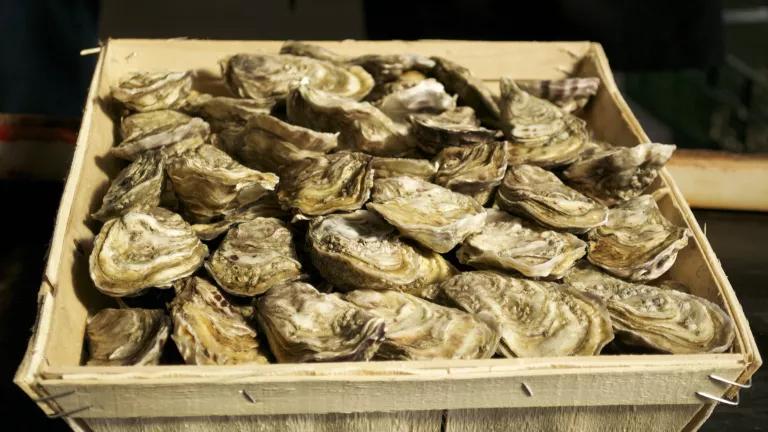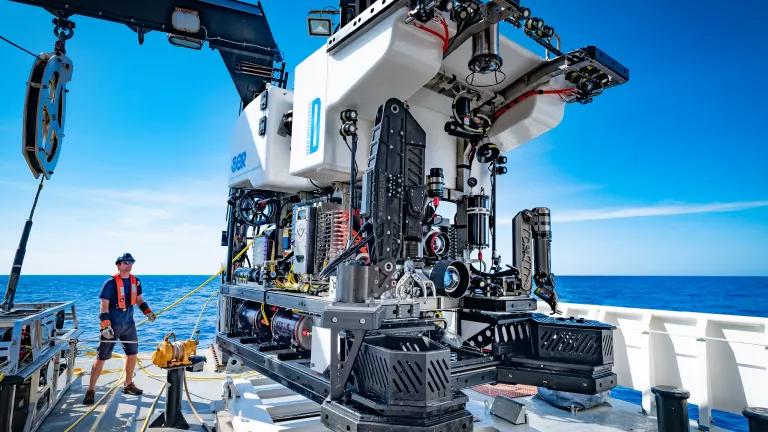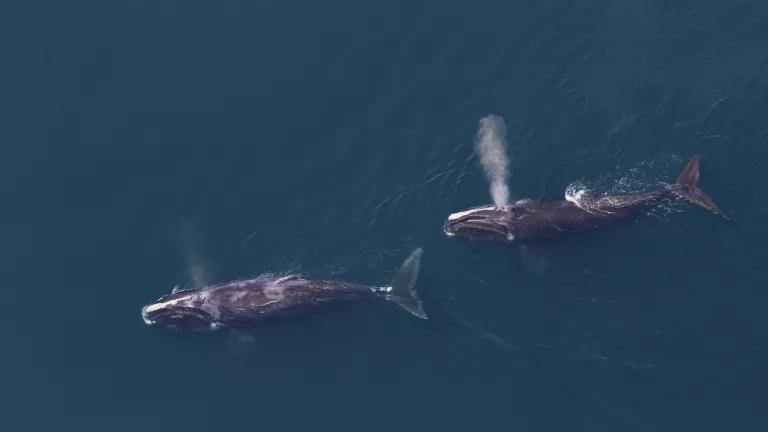
U.S. marine ecosystems and fisheries have long been an economic engine and cultural source of wealth for our country - an invaluable resource that sustains the very air we breathe. Which is why we must take action against the triple threat carbon pollution poses for our oceans: ocean warming, reduced oxygen levels, and ocean acidification.
The good news is the U.S. Environmental Protection Agency's (EPA) Clean Power Plan, sets a first ever national limit on industrial carbon pollution and provides achievable goals for every state to help us change course and slow the damaging effects of carbon pollution.
The Clean Power Plan is the centerpiece of a Climate Action Plan put forward by President Obama. For the first time, it will put limits on the carbon pollution generated by power plants--the single largest source of this pollution in the United States. The proposed standards will help cut power sector carbon pollution by 30 percent below 2005 levels by 2030 by setting state-by-state targets. The beauty of the plan is that it provides every state with flexible options in how they choose to meet those targets. Tools they can choose from include making existing coal-fired power plants more efficient, increasing use of renewables such as solar and wind, and tightening energy efficiency, for example in homes and buildings.
This all matters for the oceans because they are currently experiencing immense changes from carbon pollution. Just as doctors can quickly get a snapshot of our overall health by measuring a few vital signs (temperature, oxygen, blood pressure), oceanographers can do the same for the oceans, and they are telling us that three important changes are occurring. Because the oceans absorb 90% of the heat captured by greenhouse gases in our atmosphere, ocean water temperatures are rapidly rising. As waters warm, oxygen is declining, causing an expansion of low oxygen zones throughout our oceans. In addition, about a quarter of all fossil fuel CO2 is dissolving into the oceans causing their pH to decline.
As they have in the distant past, this trio of changes will cause a massive upheaval in our ocean ecosystems, if left unchecked. Already coastal communities that depend on healthy oceans are seeing dramatic shifts and bracing for change.
The lucrative farmed oyster industry in the Pacific Northwest first experienced the corrosive effects of ocean acidification caused by carbon pollution nearly a decade ago, when hatchery production declined by up to 80 percent as oyster larvae struggled to form shells in more acidified waters. Oyster larvae in the wild also declined. That industry has currently rebounded, with the use of pH and CO2 monitors in hatcheries, but acidification remains a looming threat, and oyster populations outside of hatcheries struggle.
Fishing is central to the economy and culture of communities on the Gulf of Maine, which ranks third in the United States in the value of its seafood landings. Here, the ocean is warming faster than 90% of the world's saltwater, and many ocean species such as shrimp and cod are moving out of range, farther north and east. Lobsters exhibit sensitivity to both rising water temperatures and reduced pH. Acidification, combined with polluted runoff, is dissolving baby clams in Maine's mudflats. Fishermen are worried about the effect of these changes on the future of their industry.

In resource-rich Alaska, research shows waters are already becoming corrosive, and that acidification is likely to lead to the decline of several important species, putting communities that depend on these fisheries at risk. Of species studied, shelled animals in Alaska such as king crab and Pacific oysters, appear to be particularly vulnerable to the impact of ocean acidification.
And so, news of the Clean Power Plan and its myriad solutions brings a sigh of relief for anyone who values healthy oceans. I am optimistic that ocean supporters in states across the country see the vital link between reducing carbon pollution and preserving our treasured (and life sustaining) ocean ecosystems.
For more on the Clean Power Plan across the country see the fact sheet.




